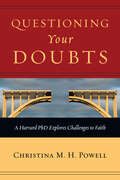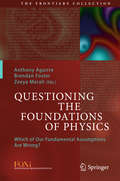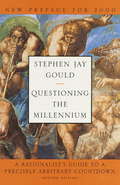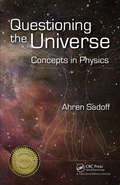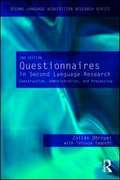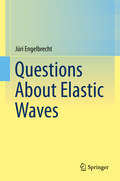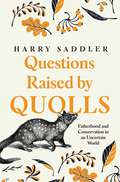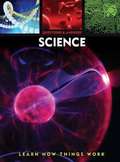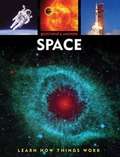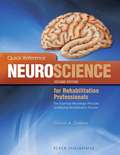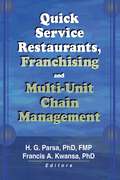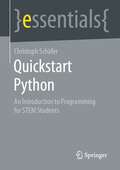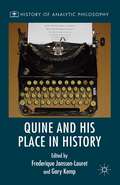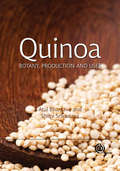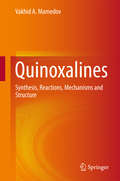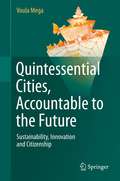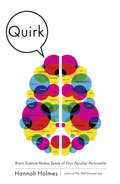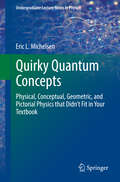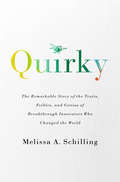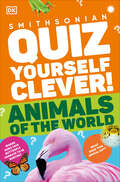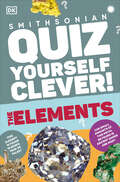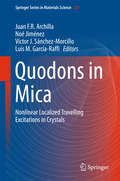- Table View
- List View
Questioning Your Doubts: A Harvard PhD Explores Challenges to Faith
by Christina M. PowellHow can we know if God is real? Does God truly care about us? Why does God create people he knows will reject him? Why did God allow my friend to become a rape victim? Should I switch jobs? Is this person the one I should marry? If you have pondered these doubts, you are not alone. Sometimes we have intellectual questions about the plausibility of God. Other times we go through difficult life experiences that cause us to question our faith. Sometimes we simply struggle feeling confident with day-to-day decisions. Christina Powell knows what it's like to grapple seriously with challenges to faith. A trained scientist and cancer researcher, she struggled with the mysterious claims of a God who exists beyond what the scientific method could detect. Using personal stories from her own life, she explores how faith can be rooted in rationality, knowledge and facts, while coming to recognize the limits of science in evaluating matters of faith. Asking good questions can help us clarify and refine our faith. We can think critically about our doubts and learn to discern the true and the good. Powell probes the hidden factors that fuel our doubts to help us move beyond skepticism, disillusionment or painful life circumstances. We can live deeper into our questions in the context of Christian community. Ultimately we can work through challenges to faith and find a renewed confidence in our beliefs. It's okay to question your faith. But don't stop there. Question your doubts as well.
Questioning the Foundations of Physics
by Anthony Aguirre Brendan Foster Zeeya MeraliThe essays in this book look at way in which the fundaments of physics might need to be changed in order to make progress towards a unified theory. They are based on the prize-winning essays submitted to the FQXi essay competition ?Which of Our Basic Physical Assumptions Are Wrong, which drew over 270 entries. As Nobel Laureate physicist Philip W. Anderson realized, the key to understanding nature's reality is not anything ?magical?, but the right attitude, ?the focus on asking the right questions, the willingness to try (and to discard) unconventional answers, the sensitive ear for phoniness, self-deception, bombast, and conventional but unproven assumptions. 'The authors of the eighteen prize-winning essays have, where necessary, adapted their essays for the present volume so as to (a) incorporate the community feedback generated in the online discussion of the essays, (b) add new material that has come to light since their completion and (c) to ensure accessibility to a broad audience of readers with a basic grounding in physics. The Foundational Questions Institute, FQXi, catalyzes, supports, and disseminates research on questions at the foundations of physics and cosmology, particularly new frontiers and innovative ideas integral to a deep understanding of reality, but unlikely to be supported by conventional funding sources.
Questioning the Millennium: A Rationalist's Guide to a Precisely Arbitrary Countdown
by Stephen Jay GouldIn this new edition of Questioning the Millennium, best-selling author Stephen Jay Gould applies his wit and erudition to one of today's most pressing subjects: the significance of the millennium. In 1950 at age eight, prompted by an issue of Life magazine marking the century's midpoint, Stephen Jay Gould started thinking about the approaching turn of the millennium. In this beautiful inquiry into time and its milestones, he shares his interest and insights with his readers. Refreshingly reasoned and absorbing, the book asks and answers the three major questions that define the approaching calendrical event. First, what exactly is this concept of a millennium and how has its meaning shifted? How did the name for a future thousand-year reign of Jesus Christ on earth get transferred to the passage of a secular period of a thousand years in current human history? When does the new millennium really begin: January 1, 2000, or January 1, 2001? (Although seemingly trivial, the debate over this issue tells an intriguing story about the cultural history of the twentieth century.) And why must our calendars be so complex, leading to our search for arbitrary regularity, including a fascination with millennia? This revised edition begins with a new and extensive preface on a key subject not treated in the original version.As always, Gould brings into his essays a wide range of compelling historical and scientific fact, including a brief history of millennial fevers, calendrical traditions, and idiosyncrasies from around the world; the story of a sixth-century monk whose errors in chronology plague us even today; and the heroism of a young autistic man who has developed the extraordinary ability to calculate dates deep into the past and the future. Ranging over a wide terrain of phenomena--from the arbitrary regularities of human calendars to the unpredictability of nature, from the vagaries of pop culture to the birth of Christ--Stephen Jay Gould holds up the mirror to our millennial passions to reveal our foibles, absurdities, and uniqueness--in other words, our humanity.
Questioning the Universe: Concepts in Physics (Discovering Physics)
by Ahren SadoffWINNER 2009 CHOICE AWARD OUTSTANDING ACADEMIC TITLE! The typical introduction to physics leaves readers with the impression that physics is about 30 different, unconnected topics such as motion, forces, gravity, electricity, light, heat, energy, and atoms. More often than not, these readers are left to conclude that physics is mostly about boring,
Questionnaires in Second Language Research: Construction, Administration, and Processing
by Zoltan Dornyei Tatsuya TaguchiQuestionnaires in Second Language Research: Construction, Administration, and Processing is the first guide in the second language field devoted to the question of how to produce and use questionnaires as reliable and valid research instruments. It offers a thorough overview of the theory of questionnaire design, administration, and processing, made accessible by concrete, real-life second language research applications. This Second Edition features a new chapter on how an actual scientific instrument was developed using the theoretical guidelines in the book, and new sections on translating questionnaires and collecting survey data on the Internet. Researchers and students in second language studies, applied linguistics, and TESOL programs will find this book invaluable, and it can also be used as a textbook for courses in quantitative research methodology and survey research in linguistics, psychology, and education departments.
Questions About Elastic Waves
by Jüri EngelbrechtThis book addresses the modelling of mechanical waves by asking the right questions about them and trying to find suitable answers. The questions follow the analytical sequence from elementary understandings to complicated cases, following a step-by-step path towards increased knowledge. The focus is on waves in elastic solids, although some examples also concern non-conservative cases for the sake of completeness. Special attention is paid to the understanding of the influence of microstructure, nonlinearity and internal variables in continua. With the help of many mathematical models for describing waves, physical phenomena concerning wave dispersion, nonlinear effects, emergence of solitary waves, scales and hierarchies of waves as well as the governing physical parameters are analysed. Also, the energy balance in waves and non-conservative models with energy influx are discussed. Finally, all answers are interwoven into the canvas of complexity.
Questions Raised by Quolls
by Harry SadlerQuestions Raised By Quolls is an eloquent examination of extinction and conservation set against the backdrop of global climate change. From his own family lineage, Harry reveals how the prosperity of the human race runs parallel with the decline of the natural world. Evocative and challenging, this eulogy to lost species will force you to question your place in the vast interconnected web of life.
Questions and Answers, Science: Learn How Things Work
by Alex Woolf Ella Fern Fiona TullochQuestion and answer format covering: Origin of life, matter, light, sound, heat, electricity, magnets, forces and motion, land, air, and water transport. Detailed explanations and beautiful illustrations. Reading level 4th grade and up.
Questions and Answers: About Space
by CapellaSPACE is full of incredible images and mind-blowing facts about the solar system, galaxies, satellites, and much more! Readers will be fascinated to learn about everything from shooting stars to space travel. Is it possible for humans to live in space? How many starts are there in the universe? How did the planets get their names? SPACE has the answers to all of these questions and many more!
Quick Reference Neuroscience For Rehabilitation Professionals: The Essential Neurologic Principles Underlying Rehabilitation Practice
by Sharon GutmanQuick Reference NeuroScience for Rehabilitation Professionals: The Essential Neurologic Principles Underlying Rehabilitation Practice, Second Edition is a user-friendly, comprehensive text that specifically addresses the key information needed to understand the neuroscience of clinical rehabilitation. This updated Second Edition is designed to provide complex information in a quick, easy-to-use format that is beneficial to students and rehabilitation professionals. Dr. Sharon A. Gutman designed Quick Reference NeuroScience for Rehabilitation Professionals, Second Edition to provide easy-to-understand explanations of complex neurologic phenomena. The text describes basic neuroanatomical structures and functions, neuropathology underlying specific clinical conditions, and theories supporting clinical treatment. Features of the Second Edition: • User-friendly, bulleted outline format • Italicized key concepts for easy scanning and identification • Color illustrations to help visualize the location of neuroanatomical structures • New clinical test questions • New text boxes outlining neurologic conditions and treatments • Updated and expanded glossary with both clinical and neurological terms Including accessible information, color illustrations, new test questions, and updated features, Quick Reference NeuroScience for Rehabilitation Professionals: The Essential Neurologic Principles Underlying Rehabilitation Practice, Second Edition is a dynamic text for all students and clinicians in occupational therapy, physical therapy, and other areas of rehabilitation.
Quick Service Restaurants, Franchising, and Multi-Unit Chain Management
by Francis A Kwansa H.G. ParsaLearn about new strategies to improve service, quality, and profitability for quick service restaurants!Quick Service Restaurants, Franchising, and Multi-Unit Chain Management examines a variety of issues pertaining to quick service restaurants. Quick-service restaurants (QSR) are the dominant sector of the foodservice industry and a one-hundred-billion-dollar industry. Since their inception in the 1920s, quick-service restaurants have become one of the cultural icons of America. This informative book contains vital information on: growth, change and strategy in the international foodservice industry food safety as an international problem and the formation of outreach committees to combat the challenges faced globally food consumption patterns and the driving forces that influence consumer food preferences the differences between mature and younger customers&’ expectations and experiences in QSRs, casual, and fine dining restaurants consumer attitudes toward airline food adding quick-service meals to airplane menus factors influencing parental patronage of QSRs a case study on how Billy Ingram, founder of White Castle restaurants, made the hamburger a staple on American menus
Quickstart Python: An Introduction to Programming for STEM Students (essentials)
by Christoph SchäferChristoph Schäfer introduces the great world of programming with Python and provides a quick introduction to independent script development. He points out how the programming language Python has established itself in recent years alongside MATLAB and R as a standard at scientific workplaces in research and development, and shows that the great popularity of Python is based on its easy extensibility: It is very easy to use modules from other developers in your own scripts and programs. In particular, the author presents the modules NumPy, SciPy and Matplotlib, which offer scientists and engineers a perfect development environment for scientific and technical computing, for applications in physics, chemistry, biology and computer science. Python is also used in the latest applications in the highly topical fields of Big Data Science and Machine Learning. The author: Dr. Christoph Schäfer teaches and researches in the Department of Computational Physics at the Institute of Astronomy and Astrophysics at the Eberhard Karls University of Tübingen. This Springer essential is a translation of the original German 1st edition essentials, Schnellstart Python by Christoph Schäfer, published by Springer Fachmedien Wiesbaden GmbH, part of Springer Nature in 2019. The translation was done with the help of artificial intelligence (machine translation by the service DeepL.com). A subsequent human revision was done primarily in terms of content, so that the book will read stylistically differently from a conventional translation. Springer Nature works continuously to further the development of tools for the production of books and on the related technologies to support the authors.
Quine and His Place in History (History of Analytic Philosophy)
by Gary Kemp Frederique Janssen-LauretContaining three previously unpublished papers by W.V. Quine as well as historical, exegetical, and critical papers by several leading Quine scholars including Hylton, Ebbs, and Ben-Menahem, this volume aims to remedy the comparative lack of historical investigation of Quine and his philosophical context.
Quinoa
by Shilpi Srivastava Didier Bazile Enrique A Martínez Atul Bhargava Francisco Fuentes* Quinoa is an invaluable crop, highlighted by the FAO as one of the world's main crops for future food security * Timely publication - The year 2013 has been declared "The International Year of the Quinoa" (IYQ), recognizing the Andean indigenous peoples, who have maintained, controlled, protected and preserved quinoa as food for present and future generations thanks to their traditional knowledge and practices of living well in harmony with mother earth and nature. * Covers the history, phylogeny and systematics, botany and agrotechnology
Quinoa: Botany, Production and Uses (Botany, Production and Uses)
by Shilpi Srivastava Atul Bhargava* Quinoa is an invaluable crop, highlighted by the FAO as one of the world’s main crops for future food security * Timely publication – The year 2013 has been declared "The International Year of the Quinoa" (IYQ), recognizing the Andean indigenous peoples, who have maintained, controlled, protected and preserved quinoa as food for present and future generations thanks to their traditional knowledge and practices of living well in harmony with mother earth and nature. * Covers the history, phylogeny and systematics, botany and agrotechnology
Quinoxalines
by Vakhid A. MamedovThisbook reviews the fundamental aspects of quinoxaline chemistry: synthesis,reactions, mechanisms, structure, properties, and uses. The first four chapterspresent a survey of the developments in quinoxaline chemistry since thepublication of the monograph on "Condensed Pyrazines" by Cheeseman and Cooksonin 1979. These chapters give comprehensive coverage of all the methods of the synthesis of quinoxalinesand the important quinoxaline-containing ring systems suchas thiazolo[3,4-a]-, pyrrolo[1,2-a]-, and imidazo[1,5-a]quinoxalines. Chapter five describes many new methods for the construction of quinoxalinemacrocycles, which are important in applications such as optical devices andmaterials. The final chapter reviews all previously known rearrangements ofheterocyclic systems that lead to benzimidazole derivatives. Mamedov criticallyanalyses these transformations to reveal a novel acid-catalyzed rearrangementof quinoxalinones giving 2-heteroarylbenzimidazoles and1-heteroarylbenzimidazolones in the presence of nucleophilic reactants (MAMEDOVHeterocycle Rearrangement). This book is of interest to researchers in thefields of heterocyclic and synthetic organic chemistry.
Quintessential Cities, Accountable to the Future: Sustainability, Innovation and Citizenship
by Voula MegaThis book can be seen as the third part of an unofficial trilogy on Sustainable Cities of the Future with the author's previous books 'Sustainable Development, Energy and the City' and 'Sustainable Cities for the third millennium: The Odyssey of urban excellence', both prefaced by Prof. Sir Peter Hall. All three books follow the evolving forefront of innovations towards Sustainable Cities. They collectively try to respond to the questions: What future cities wish to build (with their scarcities and capacities) on a finite planet? What do-they do to achieve this? How do-they contribute to redesign the world? The third book adopts, first and foremost, a strategic foresight approach including a scan of the future trends, tensions and risks in a more uncertain world, the possible and preferable futures, emerging policy issues, such as intergenerational cities or cities welcoming the immigrants and their impact on sustainable development, the Rio+20 prospects and the effects of the protracted crisis, efforts by world interconnected cities, including a case-study on Bangkok, a laboratory of urban change, and examples of frugal and resilient urban policies.
Quirk: Brain Science Makes Sense of Your Peculiar Personality
by Hannah HolmesWho are you? It's the most fundamental of human questions. Are you the type of person who tilts at windmills, or the one who prefers to view them from the comfort of an air-conditioned motorcoach? Our personalities are endlessly fascinating--not just to ourselves but also to our spouses, our parents, our children, our co-workers, our neighbors. As a highly social species, humans have to navigate among an astonishing variety of personalities. But how did all these different permutations come about? And what purpose do they serve? With her trademark wit and sly humor, Hannah Holmes takes readers into the amazing world of personality and modern brain science. Using the Five Factor Model, which slices temperaments into the major factors (Extraversion, Neuroticism, Agreeableness, Conscientiousness, and Openness) and minor facets (such as impulsive, artistic, or cautious), Holmes demonstrates how our genes and brains dictate which factors and facets each of us displays. Are you a Nervous Nelly? Your amygdala is probably calling the shots. Hyperactive Hal? It's all about the dopamine. Each facet took root deep in the evolution of life on Earth, with Nature allowing enough personal variation to see a species through good times and bad. Just as there are introverted and extroverted people, there are introverted and extroverted mice, and even starfish. In fact, the personality genes we share with mice make them invaluable models for the study of disorders like depression, schizophrenia, and anxiety. Thus it is deep and ancient biases that guide your dealings with a very modern world. Your personality helps to determine the political party you support, the car you drive, the way you eat M&Ms, and the likelihood that you'll cheat on your spouse. Drawing on data from top research laboratories, the lives of her eccentric friends, the conflicts that plague her own household, and even the habits of her two pet mice, Hannah Holmes summarizes the factors that shape you. And what she proves is that it does take all kinds. Even the most irksome and trying personality you've ever encountered contributes to the diversity of our species. And diversity is the key to our survival.
Quirks of Human Anatomy: An Evo-devo Look at the Human Body
by Lewis I. Held Jr.With the emergence of the new field of evolutionary developmental biology we are witnessing a renaissance of Darwin's insights 150 years after his Origin of Species. Thus far, the exciting findings from "evo-devo" have only been trickling into college courses and into the domain of non-specialists. With its focus on the human organism, Quirks of Human Anatomy opens the floodgates by stating the arguments of evo-devo in plain English, and by offering a cornucopia of interesting case studies and examples. Its didactic value is enhanced by 24 schematic diagrams that integrate a host of disparate observations, by its Socratic question-and-answer format, and by its unprecedented compilation of the literature. By framing the "hows" of development in terms of the "whys" of evolution, it lets readers probe the deepest questions of biology. Readers will find the book not only educational but also enjoyable, as it revels in the fun of scientific exploration.
Quirky Quantum Concepts
by Eric L. MichelsenQuirky Quantum Concepts explains the more important and more difficult concepts in theoretical quantum mechanics, especially those which are consistently neglected or confusing in many common expositions. The emphasis is on physical understanding, which is necessary for the development of new, cutting edge science. In particular, this book explains the basis for many standard quantum methods, which are too often presented without sufficient motivation or interpretation. The book is not a simplification or popularization: it is real science for real scientists. Physics includes math, and this book does not shy away from it, but neither does it hide behind it. Without conceptual understanding, math is gibberish. The discussions here provide the experimental and theoretical reasoning behind some of the great discoveries, so the reader may see how discoveries arise from a rational process of thinking, a process which Quirky Quantum Concepts makes accessible to its readers. Quirky Quantum Concepts is therefore a supplement to almost any existing quantum mechanics text. Students and scientists will appreciate the combination of conversational style, which promotes understanding, with thorough scientific accuracy.
Quirky: The Remarkable Story of the Traits, Foibles, and Genius of Breakthrough Innovators Who Changed the World
by Melissa A SchillingThe science behind the traits and quirks that drive creative geniuses to make spectacular breakthroughsWhat really distinguishes the people who literally change the world--those creative geniuses who give us one breakthrough after another? What differentiates Marie Curie or Elon Musk from the merely creative, the many one-hit wonders among us?Melissa Schilling, one of the world's leading experts on innovation, invites us into the lives of eight people--Albert Einstein, Benjamin Franklin, Elon Musk, Dean Kamen, Nikola Tesla, Marie Curie, Thomas Edison, and Steve Jobs--to identify the traits and experiences that drove them to make spectacular breakthroughs, over and over again. While all innovators possess incredible intellect, intellect alone, she shows, does not create a breakthrough innovator. It was their personal, social, and emotional quirkiness that enabled true genius to break through--not just once but again and again.Nearly all of the innovators, for example, exhibited high levels of social detachment that enabled them to break with norms, an almost maniacal faith in their ability to overcome obstacles, and a passionate idealism that pushed them to work with intensity even in the face of criticism or failure. While these individual traits would be unlikely to work in isolation--being unconventional without having high levels of confidence, effort, and goal directedness might, for example, result in rebellious behavior that does not lead to meaningful outcomes--together they can fuel both the ability and drive to pursue what others deem impossible. Schilling shares the science behind the convergence of traits that increases the likelihood of success. And, as Schilling also reveals, there is much to learn about nurturing breakthrough innovation in our own lives--in, for example, the way we run organizations, manage people, and even how we raise our children.
Quiz Yourself Clever! Animals of the World (DK Quiz Yourself Clever )
by DKDiscover your own inner Attenborough with this fact-packed, quick-quiztastic book, which covers more than 120 animals, from terrifying tigers to adorable apes!This amazing book welcomes you to the animal kingdom where you can meet more than 100 species, ranging from lions to butterflies and everything in between. Stunning pictures and fast facts will allow you to amass a wealth of knowledge in a fun way. Meet familiar creatures, including polar bears and tigers, and unbelievable ones, such as a vampire bat and a trumpetfish, with each animal having its own quiz questions to test your knowledge on what you've learned. For even more fun, get friends involved and quiz each other!Every creature is shown in beautiful detail, with quiz questions surrounding its portrait. Turn the page to find the answers to the questions—delivered in fast-fact style, including what they eat, where they live, how big they are compared to humans, and more images and facts. A jaw-dropping spectrum of animal types—from fish and birds to reptiles and mammals—provides a learning experience like no other!
Quiz Yourself Clever! Elements (DK Quiz Yourself Clever )
by DKGet to grips with the elements through fun quizzes.The periodic table sets out the humble ingredients of everything in the universe, but with 118 elements, that's a lot of ingredients to remember! This is where Quiz Yourself Clever! Elements comes in.The pure form of every element on the periodic table is shown via an eye-catching image, surrounded by quiz-style questions. Turn the page to find the answers, contained in a handy dataset, from its atomic number and mass to its melting point, and even when it was discovered. Images of how it appears in nature and its uses give a fuller understanding of each element.You can use the book to test your own knowledge, or how about using it to quiz a friend? So, whether you're studying for exams, want to play fun games with friends, or you're just curious about the building blocks of everything around you, you'll be in your element with this book before you know it!
Quodons in Mica
by Juan F. R. Archilla Noé Jiménez Victor J. Sánchez-Morcillo Luis M. García-RaffiThis book presents the current knowledge about nonlinear localized travelling excitations in crystals. Excitations can be vibrational, electronic, magnetic or of many other types, in many different types of crystals, as silicates, semiconductors and metals. The book is dedicated to the British scientist FM Russell, recently turned 80. He found 50 years ago that a mineral mica muscovite was able to record elementary charged particles and much later that also some kind of localized excitations, he called them quodons, was also recorded. The tracks, therefore, provide a striking experimental evidence of quodons existence. The first chapter by him presents the state of knowledge in this topic. It is followed by about 18 chapters from world leaders in the field, reviewing different aspects, materials and methods including experiments, molecular dynamics and theory and also presenting the latest results. The last part includes a personal narration of FM Russell of the deciphering of the marks in mica. It provides a unique way to present the science in an accessible way and also illustrates the process of discovery in a scientist's mind.
Quorum Sensing
by Livia Leoni Giordano RampioniThis detailed volume provides scientists interested in quorum sensing with a broad spectrum of methods and protocols useful for studying bacterial communication processes at the chemico-physical, molecular, and physiological level. Divided into three sections, the content covers detection and quantification of quorum sensing signal molecules, methods for the studying of quorum sensing at the molecular, physiological, and population level, as well as identification and characterization of anti-quorum sensing agents. Written for the highly successful Methods in Molecular Biology series, chapters include introductions to their respective topics, lists of the necessary materials and reagents, step-by-step, readily reproducible laboratory protocols, and tips on troubleshooting and avoiding known pitfalls. Authoritative and cutting-edge, Quorum Sensing: Methods and Protocols serves as a comprehensive guide to the most important methodology currently available in the field.
